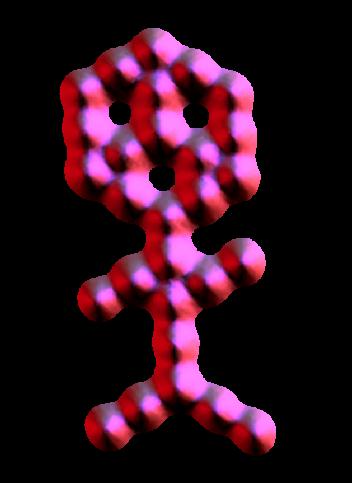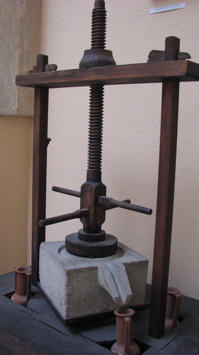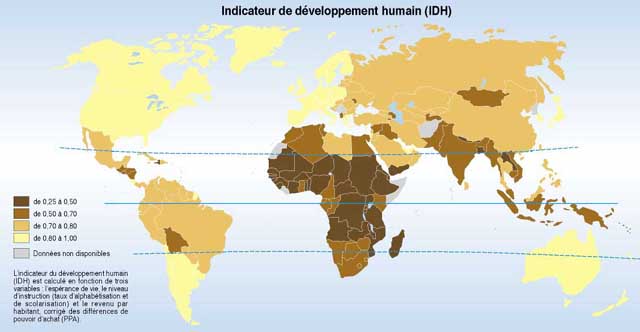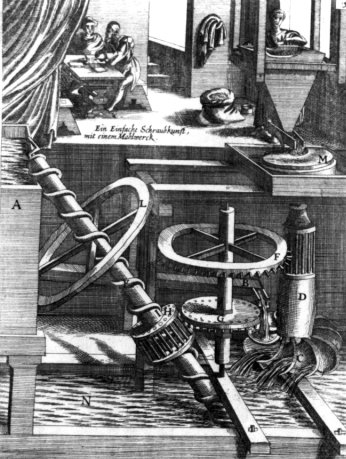 Technology texts
Technology textsNavigating the site:
White Heat, Carroll Pursell
One | Two | Three | Four | Five | Six | Seven | Eight
Table of Contents 1 Butcher's Blade 2 Out of the Loop 3 Step Right Up 4 Makes No Sense 5 Welcome to the Club 6 War in the Age of Intelligent Machines 7 Dirt and Disorder 8 Ancient Roman wine press.
Technology is a spectrum
order 
Means automation machinery systematize sequence self-moving moving parts This spectrum of the means used in production is often employed as an indicator of development in different nations; as the map reveals.
Relative stages of national development: technology transfer is synonymous with development today because of the relations among electricity, water, sanitation, refrigeration and longer life expectancy.
Machinery involves moving parts and is often a relation among gears and power sources.
The Archimedean device for lifting water: Archimedes' screw; from level "N" up into the chamber "A" .
Examining the relationship between human beings and their technology, and shows how much technology can reveal about the society in which it develops. We see how technology" --as a systematic functioning of instruments to attain some purpose-- "like language, is fundamental to social organization and is..., one of the enduring symbols of our humanity." (0utlined)
Out of the Loop
The chapter "investigates the origins of technological innovation, from the stereotype of the the eccentric inventor to the corporate teams of 'experts' employed by modern big business and reveals the degree to which change has come from outside the centers of social power." For a discussion of Oliver Evans (1780-1820) inventions see this.
Step Right Up
"Shows how technology is inextricably involved in our perception of the world around us, particularly that of time and space. The technology with which we organize the world, itself organizes us, just as our culture participates in technology at the same time as being influenced by it."
Makes No Sense
"Investigation of the role of technology in the workplace. The transfer of the artisan's skills to a machine with unskilled' operator caused a massive shift in labour relations. Combined with the management theories of mass production, the worker became another replaceable component in the factory, with identity and creative input severely limited."
One | Two | Three | Four | Five | Six | Seven | Eight
"For students of science and technology, there is no more thorny problem than that of the relationship between them."
"The academic preference for the theoretical over the practical denigrated technological innovation (which tends to evolve in the workplace) in favor of scientific progress (which tends to happen in the laboratory) Hence the inventors of the wheel and the mill are unknown while many scientists have become legendary."
War in the Age of Intelligent Machines
The chapter "examines the particular pressure exerted on technology to develop ever more lethal weapons. From the stirrup to the 'smart' bomb, each innovation in warfare has been brought about by the desire to kill more people, more efficiently. Hence human attributes (being 'smart') are attributed to machines, and machine-like attributes (being unfeeling) are imbued into soldiers."
One | Two | Three | Four | Five | Six | Seven | Eight
Dirt and Disorder
Reveals "the way in which technology has often developed in tandem with notions of morality in society. The sewer systems which take away the waste products from the great cities of Europe, are at once a metaphor for the techniques of social control and an actual part of the process. Technology has been instrumental in the human 'conquest' of nature, the implementation of rational structures on the irrational, and as such, is inseparable from our conception of ourselves."
Information
In the end the book "looks to the technology which surrounds the storage and dissemination of information. The advent of the computer has already radically affected the way we work and the way we play, and will continue to do so. However, as information becomes a prime commodity, the potential of information technology as 'information for all' may be wiped out by the disastrous social implications for those unable to access the information."








